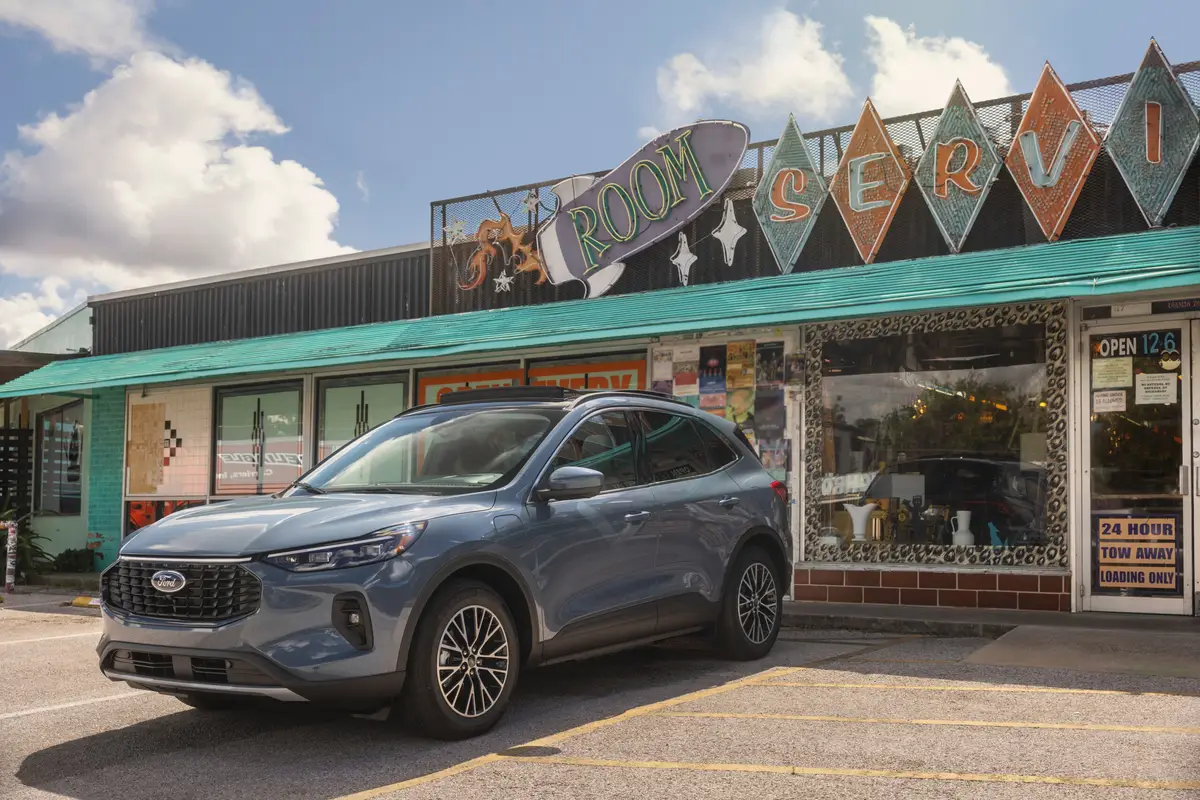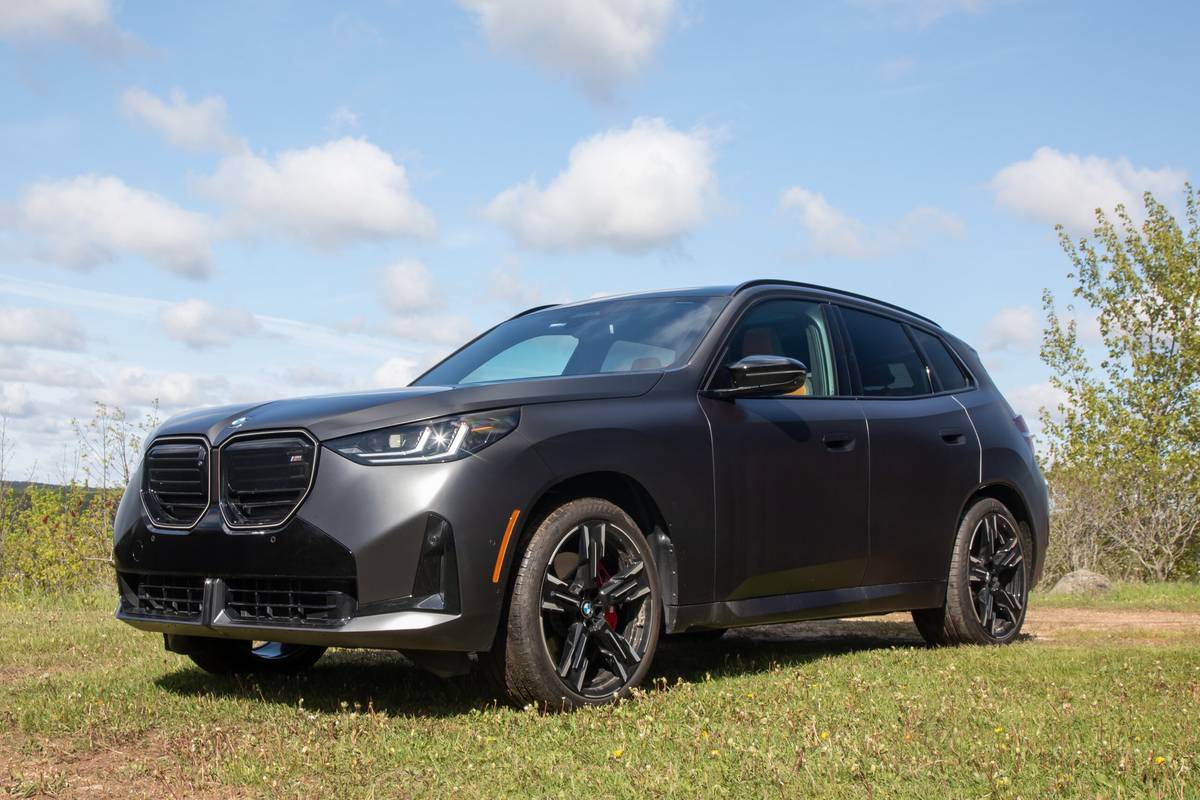washingtonpost.com's view
It’s like going home to Louisiana, the land of huge appetites and gargantuan passions. Getting there is as simple as opening the door of the 1998 Mercury Grand Marquis LS sedan and sliding behind the wheel.
It’s a big ol’ car, a float mobile that cruises highways with the ease of an alligator gliding through swamps. And there’s something wonderfully kitschy about it, something Mardi Gras. Perhaps it’s the name, “Grand Marquis,” a fabulously overblown honorific pasted to two tons of Detroit metal.
The Grand Marquis LS is not a car for everybody, any more than Louisiana is a state for everyone. But it has a definite appeal, which can be explained by two concepts.
The first is lagniappe, which in my hometown of New Orleans means “a little bit extra.” That fits the Grand Marquis LS, which offers more than you’d expect from a family car in the upper-$20,000 price range.
There’s lots of space, enough to seat six adult passengers and carry 20.6 cubic feet of their stuff. And there’s a heck of an engine capable of slinging the big car from zero to 60 mph in eight seconds.
Numerous other spiffy touches, such as an eight-way adjustable power driver’s seat, abound. But it’s an intangible — best explained by the notion of Laissez les bon temps roulez, or “Let the good times roll” — that is the most attractive thing about the Grand Marquis LS.
To wit: We Louisiana folks are party people, which means we don’t go to parties to score debating points. We go to boogie. The Grand Marquis LS understands that. It’s a well-done common car that’s not about making impressions. It’s about getting you to the places where, at least in Louisiana, impressions should be made — the dance floor and beyond.
The Grand Marquis and its structural twin, the Ford Crown Victoria, are among the last of the body-on-frame, rear-wheel-drive American sedans. As such, there’s more than a little nostalgia attached to them.
The vehicles are anachronisms, heavy-mobiles weighing as much as 3,922 pounds in an era where light is considered environmentally right. Despite numerous attempts to modernize their looks — including the somewhat rounded restyling of the 1998 Grand Marquis — outwardly they remain institutional in appearance, perfect for taxicab and police-cruiser work.
Still, they are quite popular with senior citizens, who are quite loyal to these big cars. Forty-two percent of Grand Marquis owners are repeat buyers.
There is nothing about the new Grand Marquis that will lower that customer retention rate. But, alas, there is little about the car to attract new, younger and more affluent buyers, who tend to see the Grand Marquis and its Ford cohort as the motorized symbols of faded decadence.
In addition to its slightly improved looks, the 1998 Grand Marquis comes with an improved suspension system to give the car a somewhat tighter ride; larger front brakes to help improve stopping power, bigger tires (16-inch radials) to provide better g rip in corners and sharp turns; a smoother, electronically controlled four-speed automatic transmission; and a more rigid body to help reduce shakes and rattles.
With the tested Grand Marquis LS “handling package,” which includes dual exhaust pipes, upgraded shocks and other performance enhancements, the car’s 4.6-liter V-8 produces 215 horsepower at 4,500 rpm and 275 pound-feet of torque at 3,000 rpm. The base Grand Marquis GS gets a standard 4.6 liter V-8 that produces 200 horsepower at 4,250 rpm and 265 pound-feet of torque at 3,000 rpm.
Power-assisted four-wheel disc brakes are standard, while antilock brakes are optional. Traction control is also on the option list.
1998 Mercury Grand Marquis LS
Complaint: Ford Motor Co. goofed by not making antilock brakes standard on the Grand Marquis. That little bit extra would help in the lagniappe department.
Praise: An overall, all-around good long-distance runner. Very comfortable. Very smooth. Reasonablys fe. Will come out ahead in collisions with smaller cars. Might not do as well in run-ins with the biggest sport-utility vehicles — or tanks.
Head-turning quotient: Not much.
Ride, acceleration and handling: The fun thing about the Grand Marquis is that other drivers consistently underestimated its performance (which is odd, considering that most U.S. speeders nowadays are pulled over by the car’s sibling, the Crown Victoria). Suffice it to say that this car can move! Excellent ride. Decent handling, though still floats a bit in corners. Excellent braking.
Safety: Depowered, dual front air bags, making the use of lap belts and shoulder harnesses even more important.
Mileage: About 23 miles per gallon (19-gallon tank, estimated 430-mile range on usable volume of recommended 87-octane unleaded), running mostly highway with one to five occupants and light cargo.
Sound system: AM-FM stereo radio and cassette with optional six-disc CD changer. Ford Premium Sound audio. Excellent.
Price: Base price on the tested Grand Marquis LS is $23,790. Dealer’s invoice on the base model is $22,184. Price as tested is $26,795, including $2,400 in options and a $605 destination charge.
Purse-strings note: Good value for the money, especially if you go easy on the options.
Latest news



